A recent survey of more than 2000 authors commissioned by ALLi, the Alliance of Independent Authors, has found that self-publishing authors earn more than writers with publishers. And that independent (indie) author incomes are rising, year on year. This contradicts information from earlier author income research and is good news for authors choosing the self-publishing route. Today, the AskALLi team brings you the results of the ALLi income survey.
First up, the good news. Self-publishing authors earn more than those published by third-party publishers and their incomes are rising.
Our research (the world's first independent global survey of self-publishing author income) surveyed 2000+ “primary occupation” self-publishing authors and found that they earn more than authors with publishers.
Key Findings from ALLi's Independent Author Income Survey
- In 2022, the median income of “primary income” self-publishing authors (those who spend more than half their working time on writing and publishing activities) was $12,749.
- The average income was over $80,000 (almost a quarter had not yet started to earn, bringing in between 0 and 1K.) Some 28% earned $50k+ and almost a fifth ran six-figure publishing businesses.
- Equally significantly, self-publishing author incomes are rising, year on year. with a 53% increase in 2022 over the previous year. By contrast, previous author income surveys, which have focused on revenues received by authors with third-party publishers, have repeatedly reported falling incomes. (see below)
Downoad a PDF of the report here

Orna Ross, Director of ALLi: “The results are in: indie authors enjoy great commercial as well as creative freedom.”
“ALLi has always believed that as well as enjoying more creative freedom, authors also enjoy greater commercial rewards from self-publishing,” said Orna Ross, ALLi Director. “Now that the results of this survey confirm that belief, we want to make sure all authors know that reports to the contrary are wrong. Writers can make a living as an author, if they do the work it takes to acquire good publishing skills, alongside good writing skills.
Why Did We Need a Survey?
There have been many author income surveys (UK, US, Canada, Australia) and dishearteningly, they regularly show median author income declining over time (currently resting somewhere in the region of $6,000-8,000 (median), with Australia doing better at $12,000).
The data is almost always focused on author earnings from the traditional publishing model or mixes self-publishing and third-party published authors together. This is confusing for indie authors, who often found questions in such survey irrelevant or hard to answer, as they are structured for authors who exclusively license all rights to one publisher (career authors) rather than authors who retain all rights while selling books through self-publishing platforms and their own websites (business owning authors)
- 2022: Australia: National Survey of Australian Book Authors: US$12,120 (A$18,200), up 3% per year over 7 years.
- 2022: UK: Authors Licensing & Collecting Society (ALCS): US$8,600 (STG£7,000), down (real terms) 38.2% since 2018. Down 60% in past 15yrs.
- 2018: Canada: Writers' Union of Canada US$6990: (C$9,380) down 27% since 2015, and 78% down on 1998.
- 2018: US: Author’s Guild US$6,080, down 42% from 2009 ($8,000 in 2014 and $10,500 in 2009).
Accurate market data is core to good decision-making for all businesses, micro-publishing businesses included. Having accurate data also allows ALLi to strive for ethics and excellence in self-publishing. However, indie sales are notoriously hard to register. Not only are there multiple platforms and selling outlets on and offline including direct sale, but ISBNs do not indicate who is self-publishing (and some authors don’t use ISBNs). So we needed to ask authors directly.
We created a survey focused on indie authors, with twenty questions, designed to be quick to answer – we know indies are busy people! We asked for it to be only authors who spent 50% of their working time on their writing and publishing. This was in part so we would remove those people who publish a book as a hobby or gift for family and friends and do not intend to earn money from it. Also to be able to accurately compare the results to previous author income surveys, to make the data more meaningful.
We commissioned third party analysts for independent, objective analysis.
Notes
- Median is the middle number of a sorted list, to give a more accurate number where significant outliers might skew results–some of the authors surveyed earned over a million, others hadn’t earned a penny.
- The large numbers of our cohort who haven’t earned any money (yet!) who depress the median down— either because they are still writing and haven’t published the book yet, or they haven’t (yet) acquired the writing or marketing skills they need to succeed. It is significant that once authors start to earn, on average they earn significantly more.
- We have used approx. US dollars conversion to give meaningful comparisons.
- Confirming our findings that self-publishing authors earn more, the Australian study that found incomes on the rise had a higher proportion of self-publishing authors that the other studies. 1/3 of authors had self-published a book, and 1/5 of authors had done so in the past year.
“What this study makes abundantly clear,” says Orna Ross, is that authorship as a career where you license rights exclusively to one publisher is dead for most. Today's authors are running businesses, not careers, and they are the creative director of those businesses as well as their books.”
Let's look more closely at some of the graphs.
Self-publishing Authors Earn More
Self-publishing authors earn more than those published by third-party publishers. The median writing and self-publishing revenue in 2022 was $12,749. And Indie author incomes are growing at a 53% increase over the previous year.
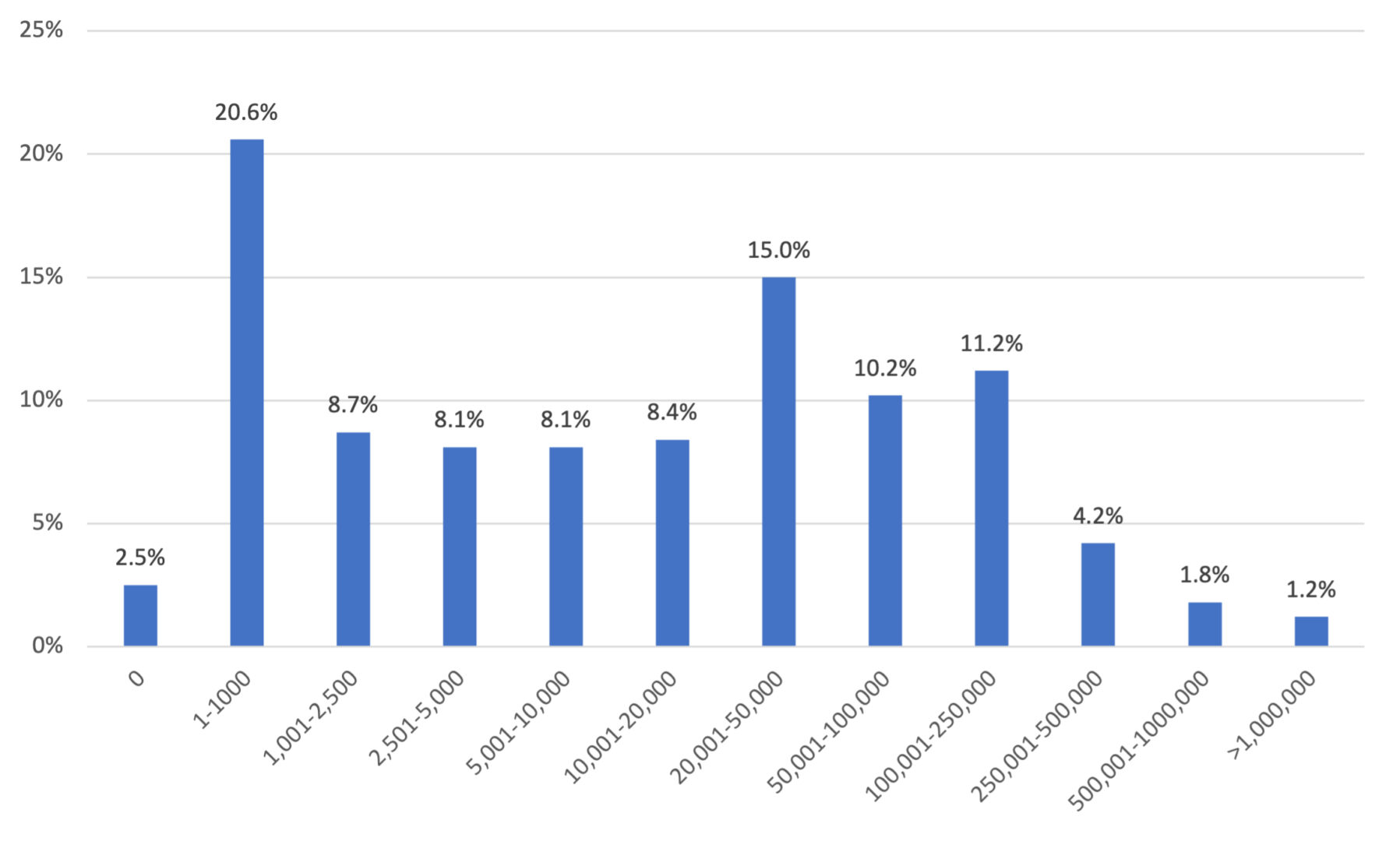
Graph of the earnings of indie authors
Demographics: Where Are They?
A lot of people questioned why we were asking questions about demographics. The truth is that while demographics shouldn’t affect income, we know all too well that they do: otherwise there would be, for example, no gender-related pay gap. Our demographics info is still being analysed because there was so much data to go through! We’re going to come back to you with more results in the coming weeks.
Why Are Indies Making More Money?
A few answers to this really stood out in the report.
First, authors are prolific: Over half of the self-published authors had published more than 10 books, and 20% had published more than 30.
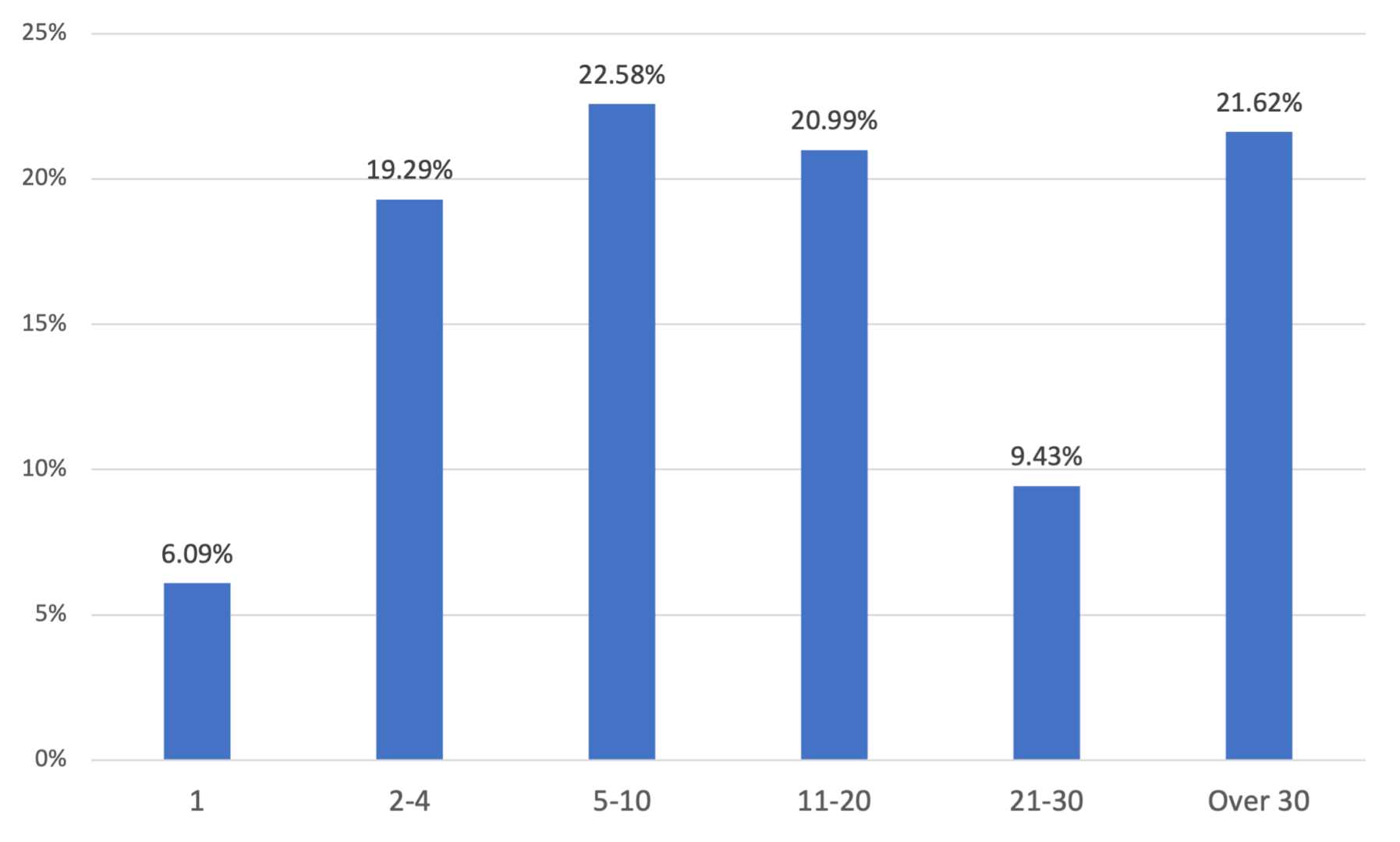
Graphic showing the numbers of books indie authors have published.
Secondly, self-published authors use mailing lists and ‘free’ books to build loyal reader bases:
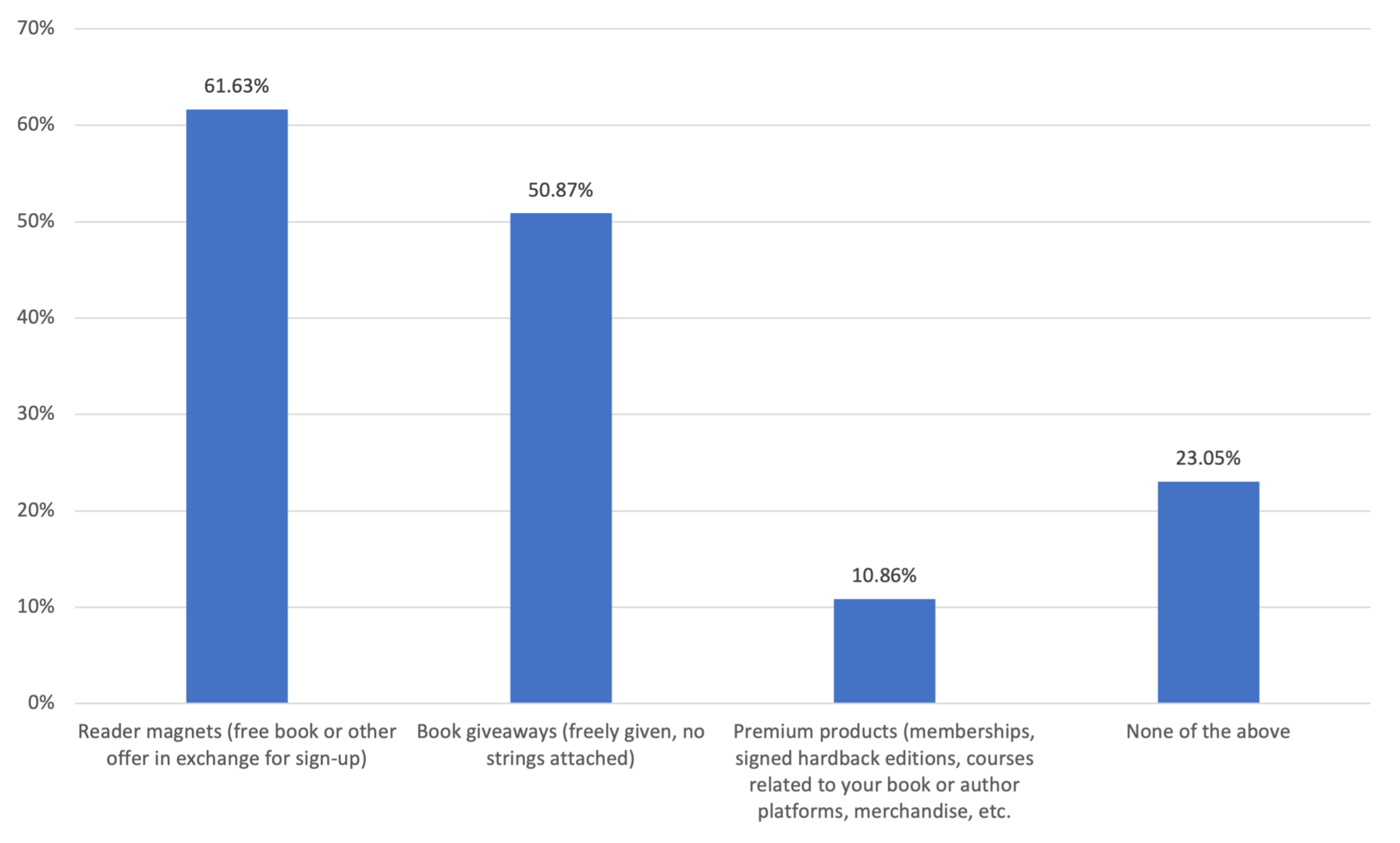
Graph showing marketing methods.
And those mailing lists allow authors to start building up direct sales independent of 3rd party retail platforms.
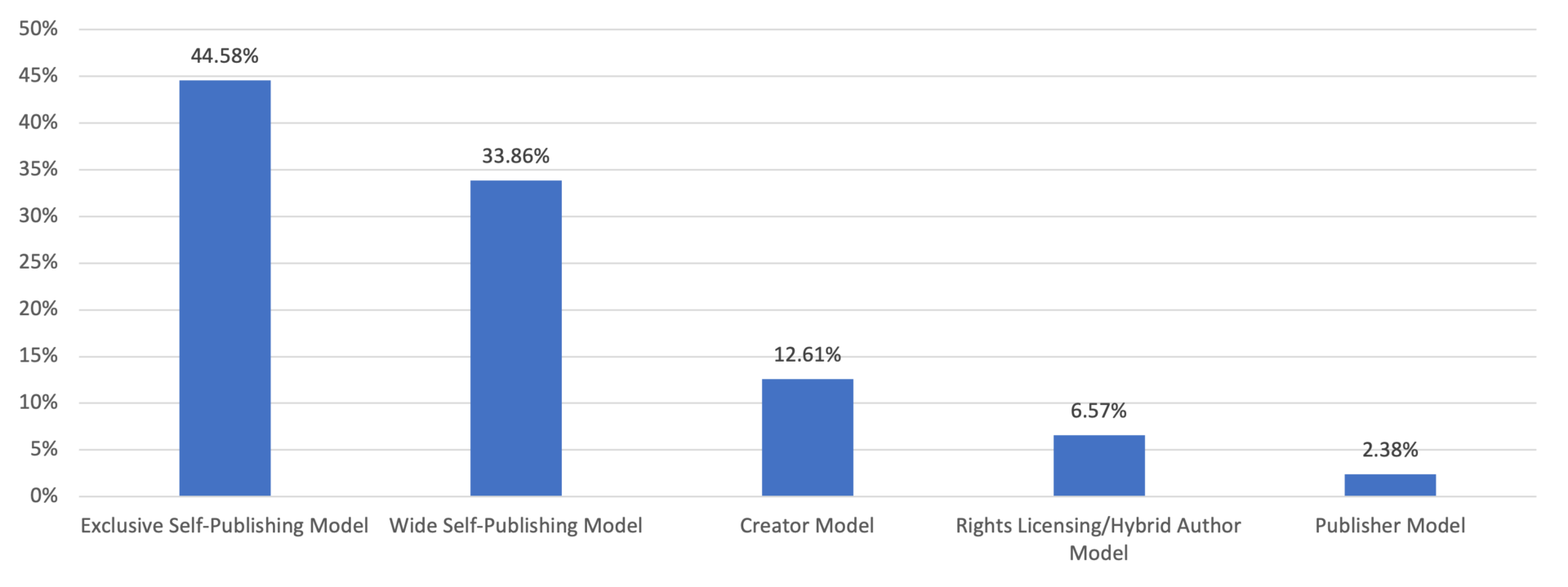
Graph showing indie author business models.
But while indie authors are often ‘accused’ of making money other than through book sales, actually this was not the case: most of their products were books in one format or another.
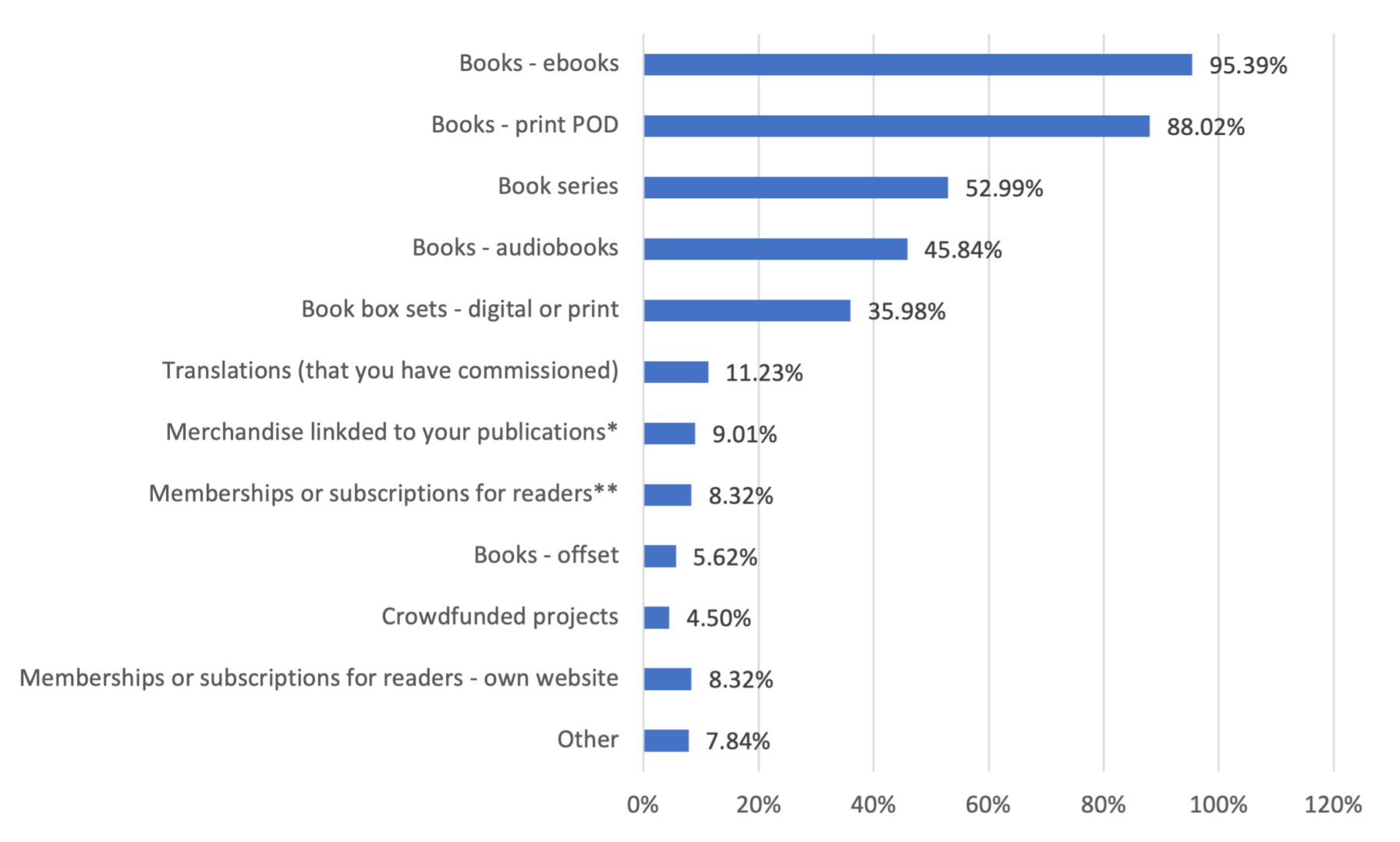
Graph showing formats indies use.
And finally, many self-published authors focus on popular genres, as demonstrated below.
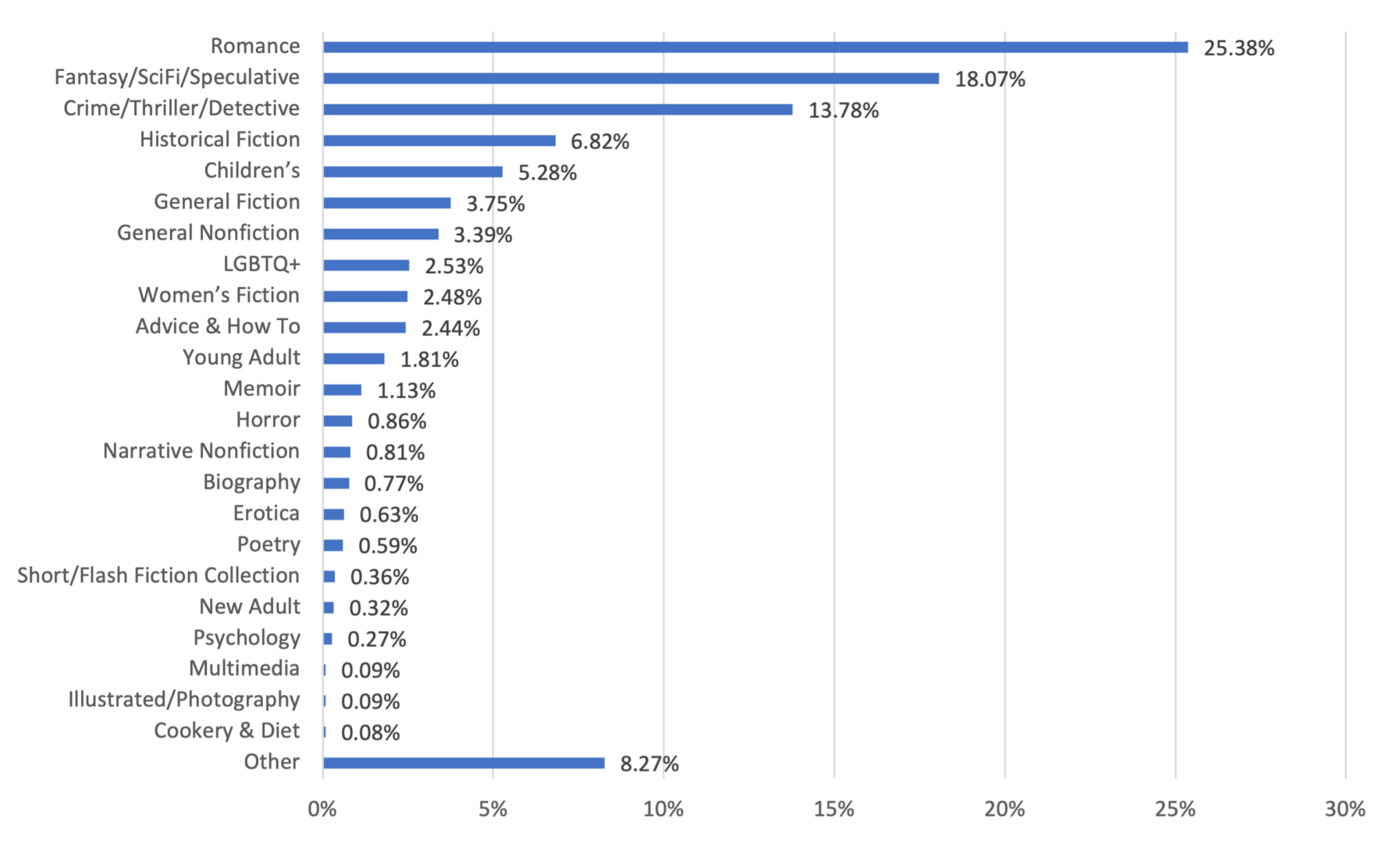
Graph showing the genres indie authors write in.
It’s a Growing and Vital Community
60% of the self-published author respondents had published for the first time during the past eight years (2015-2022), and a full 25% since 2020 – indicating the ongoing vitality of the self-publishing community.
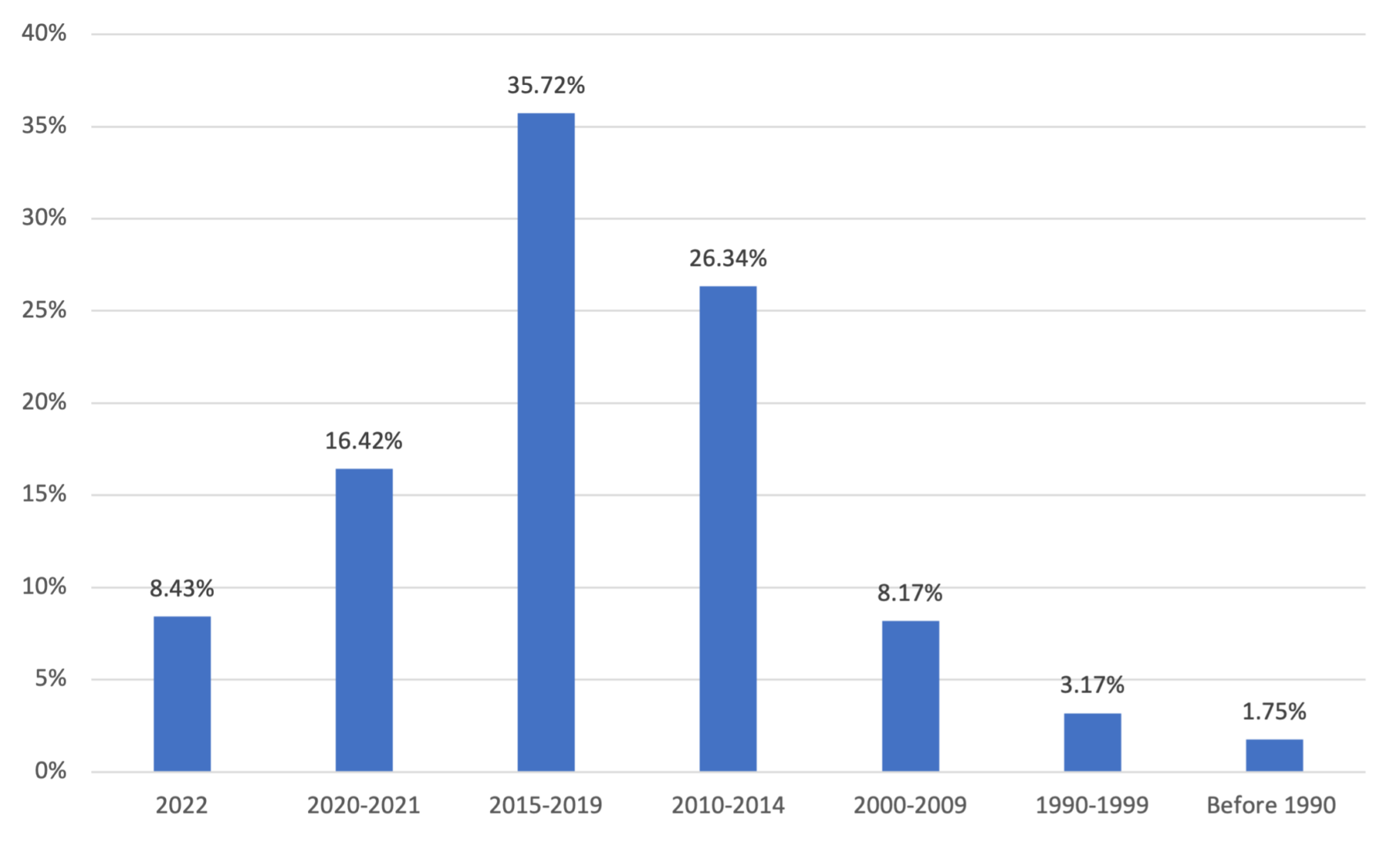
Graph showing when indie authors first published.
What’s Next? The Big Indie Author Data Drop
We feel like we’ve only just got started!
Our next step is to bring in CREATe, in further analysis sponsored by Self-Publishing Formula, in order to carry out even more data analysis, including all the demographics data we gathered. CREATe did the analysis for the ALCS income survey in the UK, and other creative industry research, so they will be able to deepen our analysis.
The findings from both reports will be added to an overall repository of information we’re calling The Big Indie Author Data Drop– highlights of findings in 2022 and 2023 by ALLi, the Self-Publishing Formula, Draft2Digital, Written Word Media, K-Lytics and 20Booksto50K, and other self-publishing organizations, to gather a compelling series of insights into the work and activities of independent authors.
We expect this work to thoroughly change the outdated and inaccurate perceptions about self-publishing that are still circulating — and, of course, for it to be a valuable resource to all indie authors.
We intend to repeat the survey regularly, probably every two years. Next time out, we will include part-time authors also, because it will give us a wider picture. We were benchmarking the ALCS reserach, which had surveyed only primary occupation authors. When we announced the 50% working time eligibility criteria, we had authors tell us they were already making $12,000 part-time, which is seriously impressive.
And next time we'll be benchmarking our own research, rather than the ALCS study, so we will also factor for net earnings as well as gross.
How Did The Survey Get Created and Sent Out?

Thad McIlroy

Steve Sieck
Steve Sieck is an accomplished strategy consulting and market research professional with a strong specialty in business, professional, and academic markets for publishing and information services. His analyst consultancy is SKS Advisors.
Thad McIlroy is a digital publishing analyst and author, and president of The Future of Publishing, based in San Francisco. He is a contributing editor to Publishers Weekly, covering digital innovation and publishing startups.
Extensive briefings and discussions were held to outline key project objectives and the best approaches for accomplishing them. This included reaching out to members and advisors with a background in data to help us refine the approach and questions. Our thanks at the early stages to Robin Phillips, Angelina J. Steffort and Karen Myers.
The ALLi and consultant team developed the online survey questionnaire with significant amounts of in-house tests run along the way.
ALLi then drew upon its own resources and those of partner organizations to develop email lists and post the survey link on social media. The online survey was fielded from February 26 to March 10, 2023. No financial or other incentives were offered to potential respondents.
The survey garnered a total of 2,539 respondents, of whom 2,261 (89%) met the qualification criteria. Of these, 1,843 (82%) completed the full survey questionnaire including the optional demographics.
In Summary
Thank you, we couldn’t have done it without you!
We so much appreciate every member who took part, asked questions, gave feedback and passed it on to other authors. We really could not have done it without you and we think together we have started something really important.
“We need the literary establishment to take note now,” says Melissa Addey, ALLi’s Campaigns Manager. “Since its inception, ALLi has campaigned for literary festivals and events, bookshops and bestseller lists, schools and universities, awards and reviewing outlets to open up to indie authors and self-publishing. More than a decade on, it’s sad to see how little has changed. Now we have this research proving that self-publishing is a very viable route to readers, it’s time for such organizations to do right by all authors, not just those with traditional publishers.”

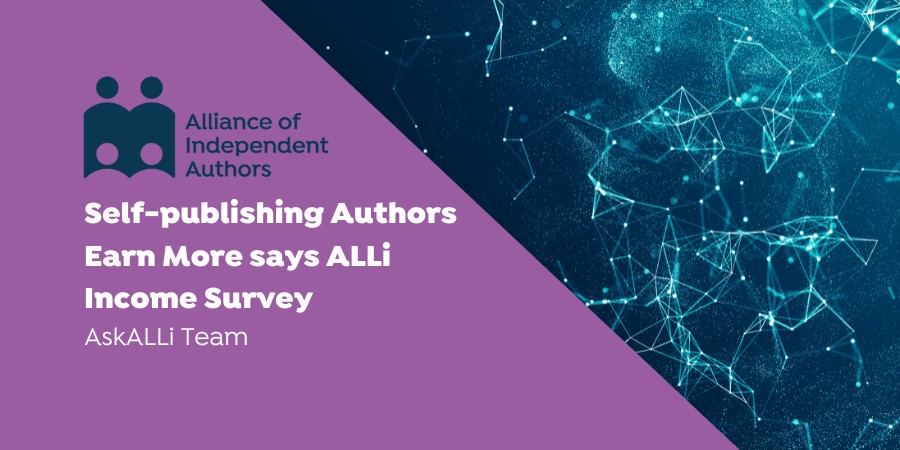
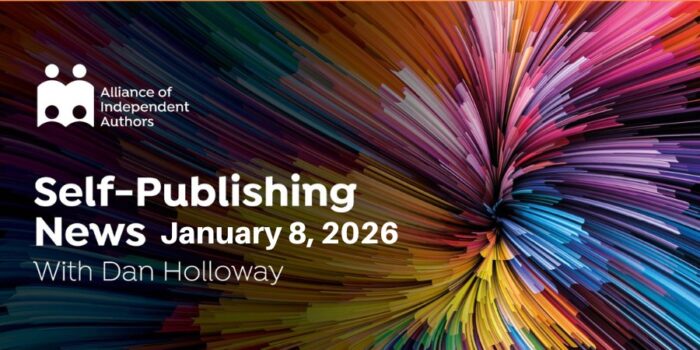

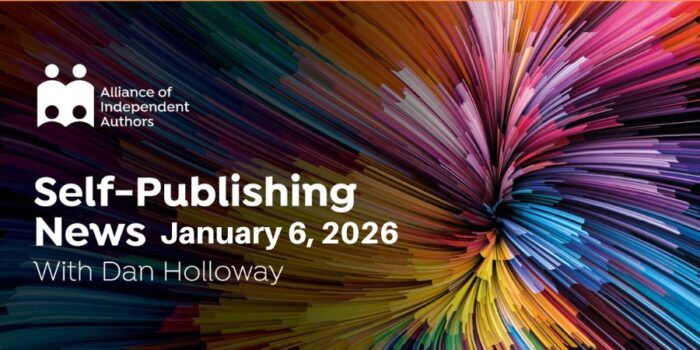
Very impressive with a 53% increase in income in one year. An encouraging result for those who are pursuing the path of self-publishing.
This is one of the best articles I have ever read on this blog. Thank you for sharing very interesting information.
Honestly, the income of each person is probably not that high. This is my personal opinion.
Are the “income” figures used in the survey taxable income (as would be calculated on tax returns after expenses are deducted) or are they gross sales (total amount sales with no expense adjustment)? That makes a big difference because while my sales total was five figures last year, my income was negligible because of all my book sales-related expenses.
I suspect they didn’t ask for that data in the survey – which is frustrating, because self-pub is a business, and expenses are as important as income when it comes to planning. Perhaps in future surveys they’ll add some relevant questions.
Hi Chris and Liz, For this first survey we were benchmarking previous author income surveys and so we asked for gross, not net, income. Next time out, we’ll be benchmarking our own research and will do both–and will also include part-time earners.
Are these numbers net or gross?
Gross